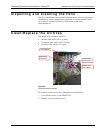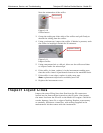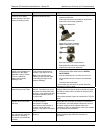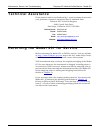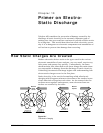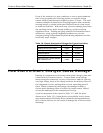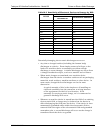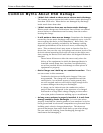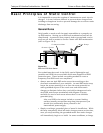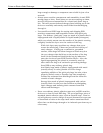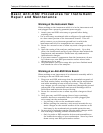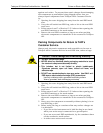
Teledyne API Ultrafine Particle Monitor - Model 651 Primer on Electro-Static Discharge
07506C DCN6727 93
Table10-2 Sensitivity of Electronic Devices to Damage by ESD
DAMAGE SUSCEPTIBILITY VOLTAGE RANGE
DEVICE
DAMAGE BEGINS
OCCURRING AT
CATASTROPHIC DAMAGE AT
MOSFET 10 100
VMOS 30 1800
NMOS 60 100
GaAsFET 60 2000
EPROM 100 100
JFET 140 7000
SAW 150 500
Op-AMP 190 2500
CMOS 200 3000
Schottky Diodes 300 2500
Film Resistors 300 3000
This Film Resistors 300 7000
ECL 500 500
SCR 500 1000
Schottky TTL 500 2500
Potentially damaging electro-static discharges can occur:
• Any time a charged surface (including the human body)
discharges to a device. Even simple contact of a finger to the
leads of a sensitive device or assembly can allow enough
discharge to cause damage. A similar discharge can occur from
a charged conductive object, such as a metallic tool or fixture.
• When static charges accumulated on a sensitive device
discharges from the device to another surface such as packaging
materials, work surfaces, machine surfaces or other device. In
some cases, charged device discharges can be the most
destructive.
A typical example of this is the simple act of installing an
electronic assembly into the connector or wiring harness
of the equipment in which it is to function. If the
assembly is carrying a static charge, as it is connected to
ground a discharge will occur.
• Whenever a sensitive device is moved into the field of an existing
electro-static field, a charge may be induced on the device in
effect discharging the field onto the device. If the device is then
momentarily grounded while within the electrostatic field or
removed from the region of the electrostatic field and grounded
somewhere else, a second discharge will occur as the charge is
transferred from the device to ground.



